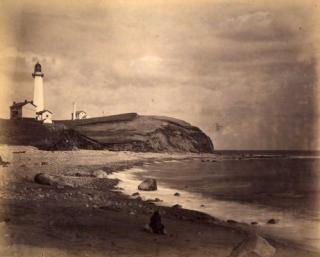The big lighthouse at Montauk Point stood sentry in the bright sun Monday, as it has since it was completed more than 200 years ago on the orders of President George Washington.
But for the first time, it stood with its historic value fully recognized.
The U.S. Department of the Interior has decided to designate the lighthouse a National Historic Landmark, according to Sen. Kirsten Gillibrand (D-N.Y.), who had lobbied Interior Secretary Ken Salazar.
It will be the 12th place in Nassau and Suffolk counties to receive the country's highest historic honor.
"Wow, this is terrific," said Suffolk Legis. Jay Schneiderman (I-Montauk).
It took more than six years to obtain the designation. The fact that it was one of the nation's first lighthouses and that Washington commissioned it wasn't enough to garner the honor.
The lighthouse's supporters had to prove it had an exceptional role in "interpreting the heritage of the United States."
That was harder than they first thought, said Eleanor Ehrhardt of the Montauk Historical Society.
"We thought it would be really simple. It was authorized by Congress under George Washington," said Ehrhardt, who worked with society member Robert Hefner to craft the proposal. "But we had to come up with more than 'It's a beautiful place in a beautiful spot.' A landmark requires more."
Hefner said that without online access to shipping records and other data it might have been impossible to detail the lighthouse's special role in the development and growth of the Port of New York, becoming a critical waypoint in guiding ships coming from Europe between 1797 and 1870.
The port -- the busiest in the United States -- was vital to the young nation's economic growth.
After being rejected for landmark status twice, the lighthouse committee searched through decades of shipping records to show how the tonnage shipped out of the European ports of Liverpool, England, and Le Havre, France, added to the fledgling nation's prosperity, and how the lighthouse was the most important landmark for ships on that route.
There was a light on the ocean bluff in Montauk long before Washington ordered the lighthouse built. "The Indians used to set fires on top of that hill -- it was called Turtle Hill then -- so their people out in the ocean would know which side [of the peninsula] to come in on," said East Hampton Supervisor Bill Wilkinson, a member of the lighthouse committee, who took a leave of absence when he became supervisor.
It's also where he went to get engaged decades ago. "I left Scranton, Pennsylvania, one year with my future wife, and we drove all the way to the lighthouse," Wilkinson said. "It's that impressive."
The historical society hopes to have a party this summer to celebrate the designation, which -- among other things -- will make it easier to apply for federal funds and will give the lighthouse a top priority for aid in case of a natural disaster, such as the hurricanes and storms that threaten to erode its foundation.
Now closed for the winter, the lighthouse and its museum will open to the public on weekends beginning March 17.

